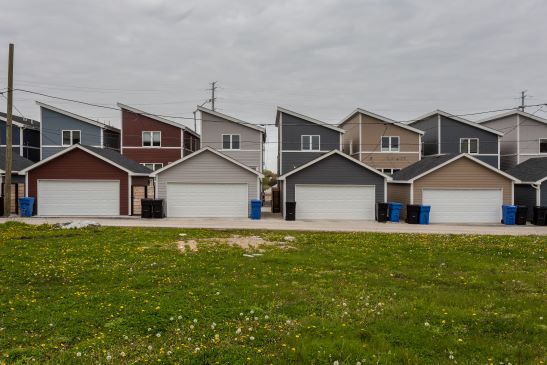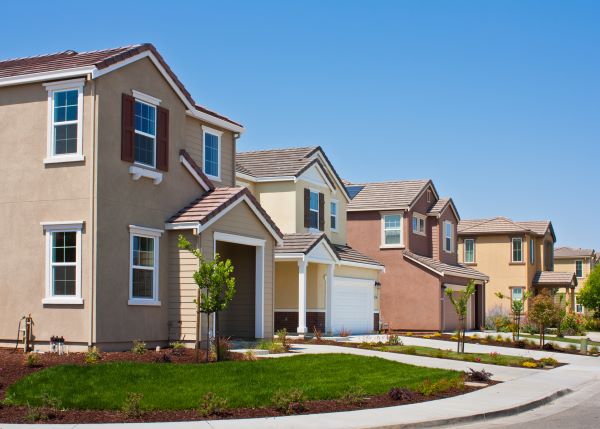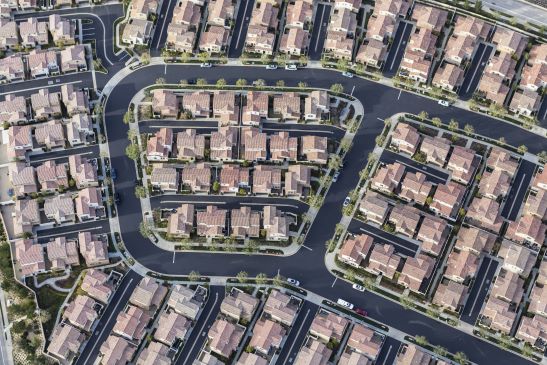The Bland Tract Home in California
California's architectural landscape boasts a rich history, from the detailed craftsmanship of the Bungalow era to the open-concept innovation of Mid-century Modern. Yet, driving through many modern developments, one can't help but wonder: when did California residential architecture become so bland? 
Gone are the days of intricate shingle work, decorative moldings, and unique rooflines that defined the Craftsman style. Mid-century Modern's celebration of light, nature, and indoor-outdoor living has also faded in favor of a more generic approach. Today, we're left with seemingly endless rows of tract homes – essentially boxes with minimal ornamentation slapped on the facade. (My pet peeve: Shutters that aren't even the size of the windows, that would never work even if they DID actually close!)
The Mimicry Trap
It's important to note that sometimes the attempt to add character backfires. We've all seen tract homes with vaguely "mid-century modern" elements like thin metal overhangs or fake breezeblocks that have no relation to the overall design or functionality of the house. These elements often appear poorly scaled or awkwardly placed, betraying a fundamental misunderstanding of the original architectural style. True inspiration comes from understanding the principles that informed these past movements, not just mimicking their superficial aesthetics. .
.
What Happened?
The rise of mass production and a focus on affordability are undeniable factors. Building a house is a significant investment, and builders prioritize keeping costs down. Elaborate details and unique features add time and expense to the construction process. However, is sacrificing character the only answer? 
A Call for More Inspired Design
Having spent five years immersed in the world of architecture school, I can confidently say that architects are capable of much more. Curriculums are designed to foster creativity, to push students to develop unique design solutions that consider functionality, aesthetics, and the surrounding environment. Imagine the shock on a professor's face if I presented a boxy tract home as my final project – let's just say my diploma might be in question! The talent and innovation exist within the architectural community.
The issue lies in the disconnect between architectural vision and the realities of mass production. However, this doesn't mean there's no room for improvement. By implementing even small design adjustments and collaborating with architects who understand the principles of good design, builders can create developments that are both budget-conscious and visually stimulating. Look no further than the work of architect William Krisel, who for the Alexander Construction Company in Palm Springs, made small detail changes to create unique mid-century modern neighborhoods that stand the test of time – to this day, these homes are some of the most in-demand in the area. (We have a yearly celebration of Mid-Century architecture in Palm Springs, celebrating the design of the era, during Modernism Week!)
Photo Credit: Stephanie Braconnier / Shutterstock.com
By embracing similar creative thinking, we can achieve a balance between affordability and architectural interest. Let's challenge the current approach and work together to ensure California's future neighborhoods inspire a sense of place and leave a lasting positive impression.
While mass production has its limitations, we can still strive for better. Here's a call to action for builders:
- Incorporate thoughtful design elements: Simple variations in rooflines, window placement, and porch designs can add personality without breaking the bank.
- Embrace local influences: Reflecting the region's architectural heritage can create a sense of place and community.
- Prioritize outdoor living: California's climate begs for seamless indoor-outdoor connections. Design patios, balconies, and courtyards that encourage residents to enjoy the sunshine.
The Long View: A Future of Bland Suburbs?
Imagine driving through a neighborhood of these characterless tract homes in 20 years. Will they age gracefully, or will they become an eyesore, lacking the charm and individuality of past architectural eras? 
A Brighter Future is Possible
By incorporating even small design considerations, builders can create communities that are not only affordable but also visually interesting and foster a sense of belonging. Let's work together to ensure California's residential landscape continues to inspire and reflect the vibrant spirit of the state.
Selling Your Home?
Get your home's value - our custom reports include accurate and up to date information.


